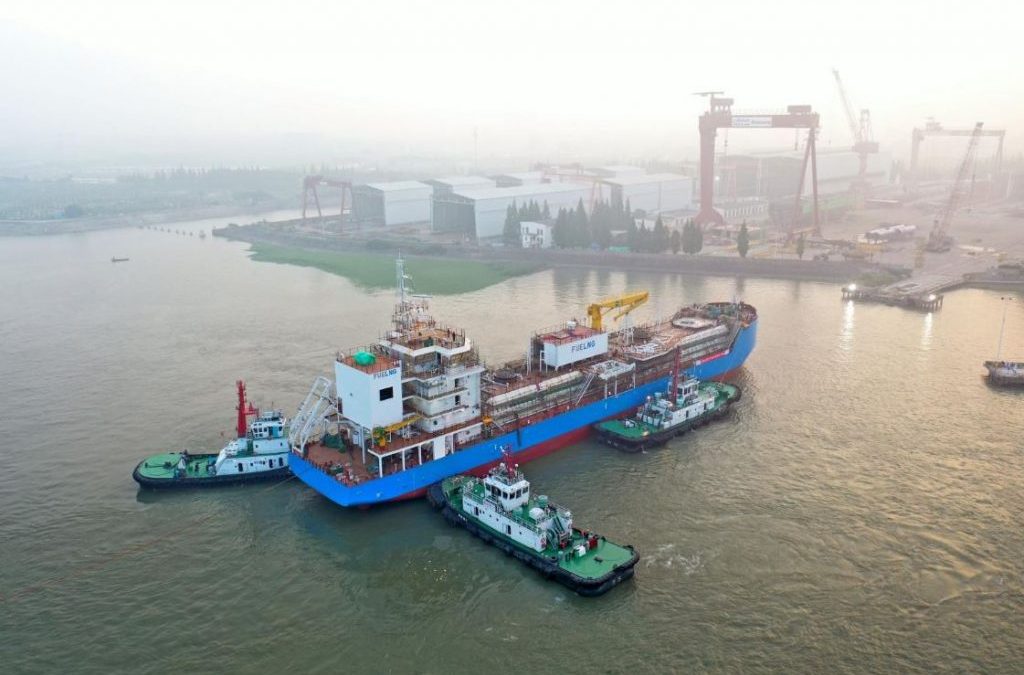LNG bunker fuel in Rotterdam has been more competitive in comparison with other shipping fuels this winter, trading at discounts to alternatives such as 0.5% marine fuel not seen since the summer months of 2023.
Winter leads to stronger heating and power demand that typically boosts LNG cargo prices, which support LNG bunker fuel prices.
But LNG bunker fuel became cheaper than 0.5% marine fuel in Rotterdam for the first time this winter on Nov. 29 holding small discounts and occasionally flipping back to a premium through to the end of the year. Since the start of this year the premium started to widen, passing the $2/Gj mark on Jan. 22.
Platts, part of S&P Global Commodity Insights, assessed the price of LNG bunker fuel in Rotterdam at $11.542/Gj on Jan. 30, $2.556/Gj cheaper than 0.5% marine fuel Rotterdam.
The discount has been largely driven by bearishness in the LNG cargo and natural gas markets, as the EU is better equipped to cope with winter given relatively high storage levels, according to trade sources.
LNG bunker fuel was last more price competitive in the summer months of 2023, which typically see lower prices due to seasonality. On Aug. 1, 2023, the super-chilled fuel was $2.819/MMBtu cheaper than 0.5% marine fuel.
Current prices are in stark contrast with last winter. On Jan. 30, 2023, LNG bunker fuel was $4.644/Gj more expensive than 0.5% marine fuel. On Jan. 31, 2022, LNG bunker fuel was $11.43/Gj more expensive than 0.5% marine fuel.
LNG bunker fuel in Rotterdam was also cheaper than other fuels, with the Platts-assessed price of marine gasoil 0.1% Rotterdam at $18.129/Gj and methanol bunkers Rotterdam at $14.755/Gj on Jan. 30.
Gas stocks in the EU were 71.13% full as of Jan. 29, according to Aggregated Gas Storage Inventory Data, slightly below the same day last year when they stood at 73.20%, but almost double the same point in 2022 when they stood at 38.57% full.
Tepid demand and milder-than-expected winter temperatures have also weighed on prices.
High prices associated with winter in the past years have not yet materialized. “We are better prepared to go into the winter than last, for both LNG and gas,” an Atlantic-based trader said.
LNG bunker fuel’s competitiveness also depends on what happens in other markets.
“A lot of the vessels that run on LNG are dual-fueled, so LNG is in constant competition with other fuels. Shipping companies will always choose the cheapest fuel,” the trader said.
In the Northwest European 0.5% fuel oil market, FOB ARA 0.5% fuel oil barges rose $3.75/mt on the day to $580.75/mt on Jan. 30, Platts data showed. Meanwhile, ICE low-sulfur gasoil futures dropped $8.75/mt on the day to reach $847.25/mt, having previously reached a two-and-a-half-month high of $856/mt the day prior.
The middle distillates complex — and notably the marine gasoil pool — has been supported by worries over supply due to the Red Sea shipping crisis.
“The potential for the arbitrage from Europe is tougher due to the Red Sea issues… Diesel is strong, margins look strong so refineries should be running at high rates which means more production also of fuel oil,” a trader said. According to him, even if all refiners wanted to run at maximum capacity, it was not possible for some in Europe due to technical issues.
Source: Hellenic Shipping News






